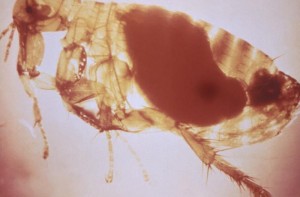The plague outbreak continues on the island of Madagascar, according to the World Health Organization (WHO) Wednesday; however, it appears to be slowing as the seasonal peak period comes to a close.

Since late August 2014, the outbreak has sickened 263 people resulting in 71 fatalities, according to the WHO. This equates to a 27 percent fatality rate.
Plague is endemic in Madagascar where they recorded 7,182 cases during the first decade of this century, second only to the Congo.
WHO says the outbreak was slowing but still posed a threat. The UN health agency previously said that “the plague is endemic in the country, with epidemic seasonal peaks ranging from September to March.”
Related: Congo, Madagascar top countries reporting most plague 2000-2009, US reports 57 cases
The term “plague” has struck fear into the hearts of people for centuries and for good reason. Historically,plague has destroyed entire civilizations. Probably the most noteworthy, the “Black Death” of the 1300s, that killed approximately one-third of Europe’s population.
Plague is an infectious disease caused by the bacterium, Yersinia pestis. It is found in animals throughout the world, most commonly rats but other rodents like ground squirrels, prairie dogs, chipmunks, rabbits and voles. Fleas typically serve as the vector of plague. Human cases have been linked to the domestic cats and dogs that brought infected fleas into the house.
People can also get infected through direct contact with an infected animal, through inhalation and in the case of pneumonic plague, person to person.
Yersinia pestis is treatable with antibiotics if started early enough.
There are three forms of human plague; bubonic, septicemic and pneumonic. For more infectious disease news and information, visit and “like” the Infectious Disease News Facebook page


We should not forget that plague is endemic in Madagascar. The WHO does not recommend any travel
restrictions or limits on trading products to or from Madagascar. It is pointed out on his site : http://www.afro.who.int/fr/madagascar/press-materials/item/7231-peste-%C3%A0-madagascar.html
Yes Jeremie, this is highlighted in this article and several others on the website. http://outbreaknewstoday.com/worry-about-the-plague-45455/